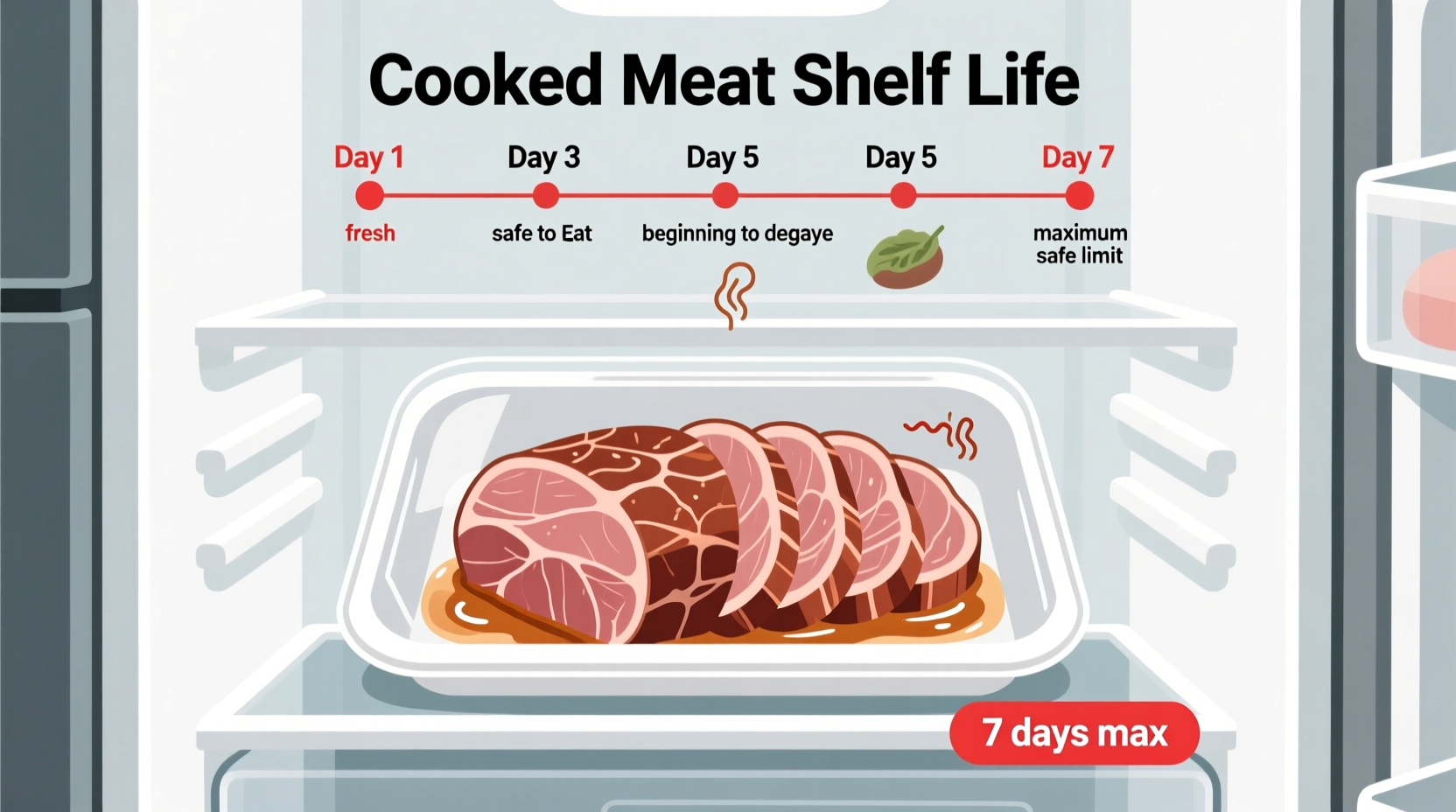Cooked meat stays safe to eat for 3-4 days when stored properly in the refrigerator at 40°F (4°C) or below. This timeframe applies to most cooked meats including chicken, beef, pork, and fish when stored in airtight containers. Turkey and ground meats follow the same guideline, while cooked meat dishes with sauces or gravy may last slightly longer due to their moisture content.
Wondering if that leftover roast chicken is still safe to eat? You're not alone. Every year, millions of households face this exact question, risking foodborne illness when they guess wrong about cooked meat storage. Proper food storage isn't just about avoiding waste—it's a critical safety measure that protects you and your family from dangerous bacteria like Salmonella and Listeria. Let's cut through the confusion with science-backed guidelines you can trust.
Why Cooked Meat Timeframes Matter for Your Health
When meat is cooked, harmful bacteria are destroyed—but new bacteria can grow rapidly during cooling and storage. The "danger zone" for bacterial growth is between 40°F and 140°F (4°C-60°C), where pathogens double every 20 minutes. Refrigeration slows this process, but doesn't stop it completely. According to the USDA Food Safety and Inspection Service, cooked meat enters the high-risk category after day 4, with significantly increased chances of foodborne illness.
Exact Storage Durations by Meat Type
While the general rule is 3-4 days for most cooked meats, specific types have slight variations based on fat content, moisture, and preparation method. This comprehensive reference table comes directly from the latest USDA FoodKeeper guidelines:
| Meat Type | Refrigerator Storage (40°F or below) | Freezer Storage |
|---|---|---|
| Cooked chicken or turkey | 3-4 days | 2-6 months |
| Cooked beef, pork, veal, lamb | 3-4 days | 2-6 months |
| Cooked ground meats | 1-2 days | 2-3 months |
| Cooked fish | 3-4 days | 4-6 months |
| Casseroles with meat | 3-4 days | 2-3 months |
| Meat gravy or broth | 2 days | 2-3 months |
Source: USDA Food Safety and Inspection Service
Step-by-Step Proper Storage Protocol
Following the right storage process matters as much as the timeframe itself. Many food safety issues stem from improper cooling and container selection:
- Cool rapidly: Divide large portions into shallow containers (no deeper than 2 inches) to cool faster. Never leave cooked meat at room temperature for more than 2 hours (1 hour if room temperature exceeds 90°F/32°C).
- Seal properly: Use airtight containers or heavy-duty freezer bags. Vacuum sealing extends freshness by reducing oxygen exposure.
- Label everything: Include cooking date and contents. "Leftovers" isn't specific enough when multiple meals are stored.
- Store strategically: Place cooked meats on upper shelves (never in the refrigerator door where temperatures fluctuate).
- Check thermometer: Verify your refrigerator maintains 40°F (4°C) or below using a separate appliance thermometer.

Warning Signs Your Cooked Meat Has Spoiled
Timeframes provide general guidance, but actual spoilage depends on multiple factors. Trust these sensory indicators over calendar dates:
- Texture changes: Slimy or sticky surface (wipe with paper towel—if residue remains, discard)
- Odor development: Sour, rotten, or ammonia-like smells (fresh cooked meat has little odor)
- Color shifts: Grayish or greenish discoloration (though some meats like ground beef may darken naturally)
- Mold appearance: Any visible mold means immediate disposal (don't just cut off the moldy part)
When in doubt, throw it out. The USDA emphasizes that harmful bacteria causing foodborne illness often don't produce noticeable changes in food.
Common Storage Mistakes That Shorten Shelf Life
Even when following time guidelines, these frequent errors compromise food safety:
- Using inappropriate containers: Takeout containers with loose lids allow air exposure
- Overpacking the refrigerator: Restricts cold air circulation, creating warm spots
- Reheating improperly: Only reheat what you'll consume immediately (repeated heating/cooling cycles accelerate spoilage)
- Ignoring "use by" dates: For store-bought cooked meats, follow package dates over general guidelines
Extending Freshness Safely
If you won't consume leftovers within 3-4 days, freezing is your best option. For optimal quality:
- Freeze within 24 hours of cooking for best results
- Remove excess air from freezer bags to prevent freezer burn
- Use moisture-vapor resistant packaging
- Thaw frozen cooked meats in the refrigerator (never at room temperature)
Remember that freezing stops bacterial growth but doesn't kill existing bacteria—proper cooking after thawing remains essential.
Special Considerations for Vulnerable Populations
While healthy adults might tolerate slightly older leftovers, certain groups should follow stricter guidelines according to the CDC:
- Infants and children under 5
- Adults over 65
- Pregnant women
- Immunocompromised individuals
For these groups, consume cooked meats within 2-3 days maximum and be extra vigilant about spoilage signs. The FDA Food Code specifically recommends shortened storage times for institutional settings serving vulnerable populations.
Key Takeaways for Safe Leftover Management
Mastering cooked meat storage prevents both food waste and foodborne illness. Remember these essential points:
- Most cooked meats last 3-4 days in proper refrigerator conditions
- Ground meats and gravies have shorter shelf lives (1-2 days)
- Storage technique affects safety as much as timeframe
- Trust sensory indicators over calendar dates
- Vulnerable populations should consume leftovers more quickly
By following these evidence-based guidelines from food safety authorities, you'll maximize both the safety and enjoyment of your leftovers while minimizing unnecessary waste.











 浙公网安备
33010002000092号
浙公网安备
33010002000092号 浙B2-20120091-4
浙B2-20120091-4